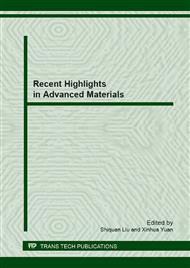p.515
p.519
p.523
p.527
p.531
p.535
p.539
p.543
p.550
Size Error and Modification of V-Groove in Thermal Microimprint
Abstract:
Thermal microimprint is a promising technology for polymer microstructure, so it is used to form V-groove on the surface of optical devices. However, it is difficult to control the size accuracy of V-groove because of the elastic recovery of polymer. In order to solve the problem, the influencing factors on the polymer elastic recovery were firstly analyzed in this article. Then, it was proposed that the embossment height of mold should be modified according to the depth of V-groove and the modifier formulas should be constructed based on the theory of polymer viscoelasticity. In the end, the optimal technological parameters of thermal microimprint were obtained through the thermal imprint experiments, and the embossment height of the mold after modification was calculated according to the experimental data, and thus a new mold was produced as to verify the accuracy of the modifier formulas. The results showed that the approach of modification could not only ensure dimension accuracy of V-groove, by keeping the error within 1μm, but also shorten the imprint time, consequently the efficiency of thermal microimprint would be improved.
Info:
Periodical:
Pages:
543-549
Citation:
Online since:
September 2013
Authors:
Keywords:
Price:
Сopyright:
© 2014 Trans Tech Publications Ltd. All Rights Reserved
Share:
Citation:


